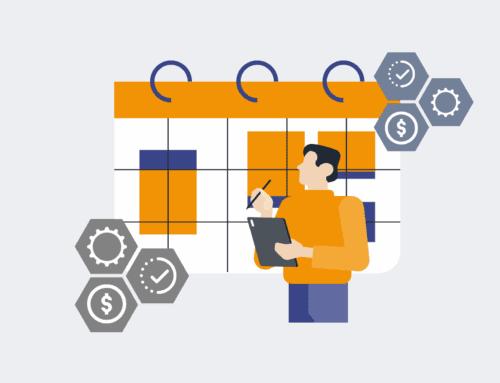How to Conduct a Pre-Implementation Audit to Identify High-Impact Automation Opportunities with Keap
Embarking on an automation journey with Keap can transform your business operations, but success hinges on strategic foresight. Before diving into implementation, a thorough pre-implementation audit is critical. This guide provides a step-by-step framework to identify the most impactful automation opportunities within your existing workflows, ensuring your Keap investment delivers maximum ROI. By meticulously assessing your current state, pinpointing bottlenecks, and strategically aligning solutions, you’ll build a roadmap for automation that genuinely saves time, reduces error, and scales your business. This isn’t just about making things faster; it’s about making them smarter and more profitable.
Step 1: Define Your Strategic Objectives and Scope
Before you can identify what to automate, you must clearly define *why* you’re automating. Begin by outlining your overarching business objectives. Are you aiming to reduce operational costs, increase lead conversion rates, improve customer retention, or free up high-value employee time? Once objectives are clear, establish the scope of your audit. Which departments, processes, or customer journeys will be under scrutiny? Avoid the trap of trying to automate everything at once. Instead, focus on specific areas where inefficiencies are most glaring and where Keap’s CRM, marketing automation, and sales pipeline features can offer immediate, tangible improvements. A focused scope ensures that your audit remains manageable and yields actionable insights, preventing analysis paralysis and setting a clear direction for your automation efforts.
Step 2: Map Current State Processes and Identify Manual Touchpoints
The next crucial step is to meticulously map out your existing business processes from end-to-end. Document each task, decision point, and hand-off, noting who is responsible and which tools are currently used. Pay particular attention to processes that involve extensive manual data entry, repetitive tasks, email follow-ups, or information transfer between disparate systems. These manual touchpoints are often prime candidates for automation. Look for areas where data is frequently re-keyed, where delays are common due to human intervention, or where errors often occur. Tools like flowcharts or process diagrams can be invaluable here. A clear visualization of your current state will expose hidden inefficiencies and reveal the “pain points” that, when addressed by Keap automation, can yield significant improvements.
Step 3: Pinpoint Bottlenecks and Areas of High Effort/Low Value
With your current processes mapped, the next phase involves identifying bottlenecks and activities that consume significant human effort but deliver relatively low strategic value. Bottlenecks often appear as points where work piles up, progress stalls, or critical information waits for approval. High effort/low value tasks include routine administrative duties, repetitive communication, or manual follow-ups that could easily be standardized. Consider where your high-value employees are spending time on tasks that don’t leverage their core competencies. These are the “time sinks” that, once automated, can free up critical human capital for more strategic initiatives. Identifying these specific areas is crucial for prioritizing automation opportunities that will deliver the most impactful time and cost savings.
Step 4: Assess Keap’s Capabilities Against Identified Opportunities
Now, align the identified bottlenecks and high effort/low value tasks with Keap’s robust feature set. Keap excels in CRM, marketing automation, sales pipeline management, and payment processing. Can Keap’s campaign builder automate your lead nurturing sequences? Can its CRM capabilities streamline client onboarding or follow-ups? Are there opportunities to automate data capture from web forms directly into Keap, eliminating manual entry? Can payment reminders or membership renewals be automated through Keap’s e-commerce integrations? Consider how Keap can serve as your single source of truth for customer data, orchestrating communications and tasks across the customer lifecycle. This assessment phase helps to filter opportunities, ensuring you prioritize automations that truly leverage Keap’s strengths and deliver optimal results.
Step 5: Prioritize Opportunities Based on Impact and Feasibility
Not all automation opportunities are created equal. Prioritize the identified opportunities based on a matrix of potential impact (e.g., time saved, revenue increased, errors reduced) and feasibility (e.g., complexity, resources required, immediate access to data). Focus first on “quick wins” – automations that are relatively easy to implement with Keap and promise a high return on investment. These early successes build momentum and demonstrate the value of automation to stakeholders. Simultaneously, identify more complex, high-impact opportunities that may require a phased approach. A balanced prioritization ensures that you tackle both immediate improvements and foundational changes, building a sustainable automation strategy that progressively transforms your operations and maximizes your Keap utilization.
Step 6: Develop a Phased Automation Roadmap with Clear Metrics
With prioritized opportunities in hand, create a detailed, phased automation roadmap. This roadmap should outline specific projects, timelines, assigned responsibilities, and the expected outcomes for each automation. Break down larger initiatives into smaller, manageable sprints. For each planned automation, define clear, measurable key performance indicators (KPIs) that will allow you to track its success. How will you measure time saved, error reduction, or increased conversion rates? Establishing these metrics upfront ensures that you can objectively evaluate the impact of your Keap automations post-implementation. This structured approach not only guides your implementation process but also provides a framework for continuous improvement, allowing you to iterate and optimize your automated workflows over time.
If you would like to read more, we recommend this article: The Keap Automation ROI Calculator: From Justification to Transformative HR









